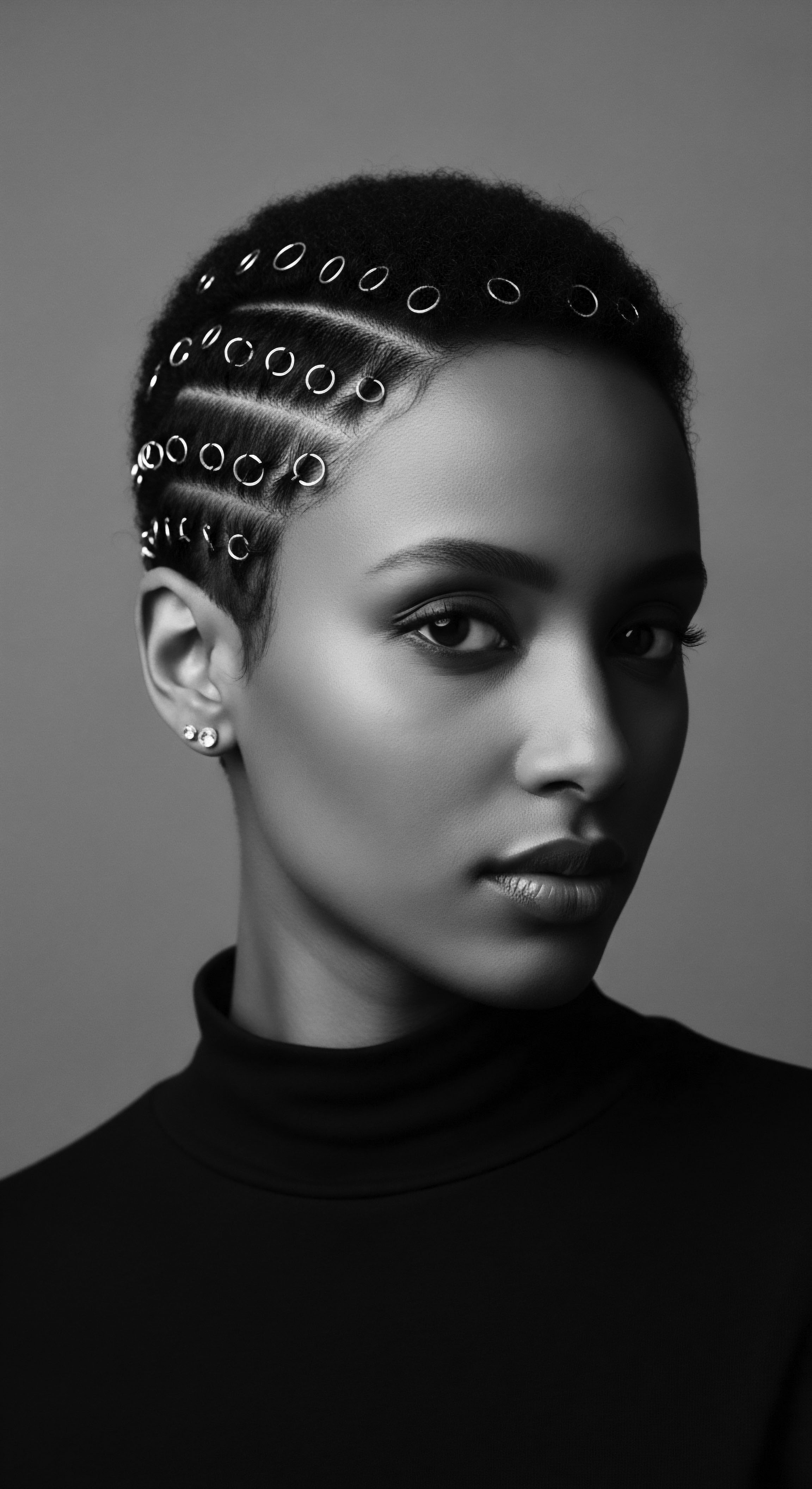
Fundamentals
The Hair Follicle Health, in its most elemental interpretation, speaks to the foundational wellbeing of the tiny, intricate organs nestled beneath the scalp’s surface. Each follicle serves as a miniature factory, responsible for the creation and sustenance of every strand of hair. A vibrant follicle, therefore, represents the wellspring of hair vitality, influencing everything from growth patterns to the strength and luster of the hair fiber itself. This fundamental concept extends beyond mere aesthetics, reaching into the very core of our being, reflecting our internal state and external environment.
Consider the hair follicle as a seedbed. Just as a seed requires fertile soil, adequate water, and sunlight to flourish, so too does the hair follicle demand a supportive environment for optimal function. This includes proper blood circulation to deliver nutrients, a balanced scalp microbiome to deter irritations, and protection from physical stressors.
When these conditions are met, the follicle can perform its remarkable biological work, cycling through phases of growth, rest, and renewal with efficiency. For textured hair, this elemental understanding gains particular resonance, as the unique spiral shape of the follicle, which gives rise to curls and coils, also presents specific considerations for its care.
Hair Follicle Health is the core physiological state of the hair-producing organ, a fundamental determinant of hair’s strength, growth, and overall vitality.
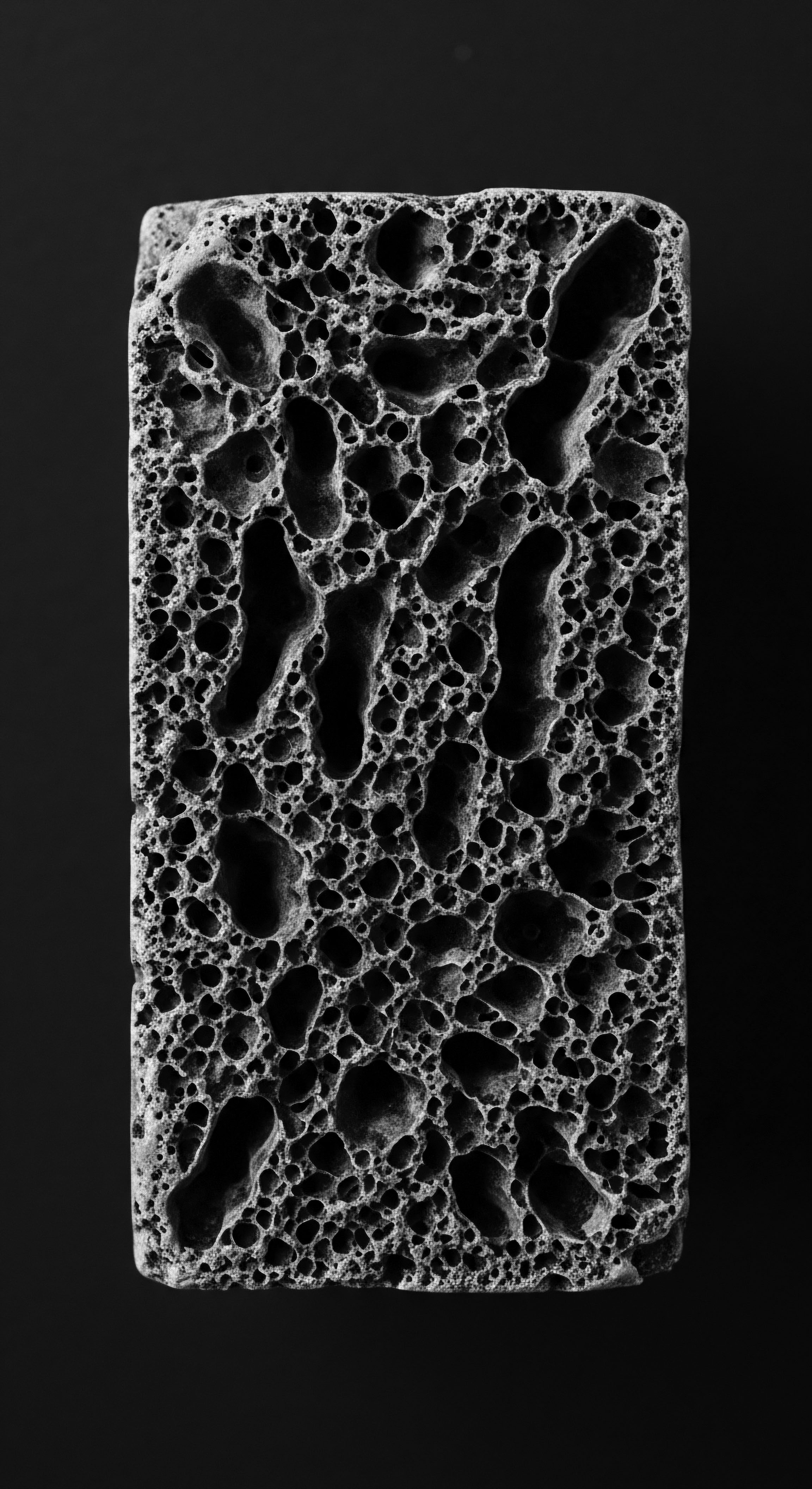
The Architecture of Growth
Beneath the visible surface, each hair follicle comprises several distinct components, each playing a crucial part in the life cycle of a hair strand. At its deepest point lies the Dermal Papilla, a small, cone-shaped structure abundant with blood vessels and nerves. This papilla acts as the command center, receiving vital signals and nutrients that direct hair growth.
Surrounding the dermal papilla is the Hair Matrix, a region of rapidly dividing cells that produce the hair shaft itself. These cells continually push upwards, keratinizing as they ascend, forming the resilient protein structure we recognize as hair.
Further up, the follicle includes the Sebaceous Gland, which produces sebum, a natural oil that lubricates the hair and scalp, offering a protective layer. While essential for moisture, an imbalance in sebum production can lead to issues, particularly for textured hair types that often require more external moisture due to their structural characteristics. The outermost layer of the follicle, the Outer Root Sheath, provides structural support and contains stem cells vital for follicle regeneration. Understanding these components helps us appreciate the complexity of hair creation and the many points at which health can be supported or compromised.
- Dermal Papilla ❉ The nutrient and signal hub, orchestrating hair growth.
- Hair Matrix ❉ The cellular engine, responsible for forming the hair strand.
- Sebaceous Gland ❉ The source of natural oils, providing essential lubrication.
- Outer Root Sheath ❉ A protective casing, housing regenerative stem cells.
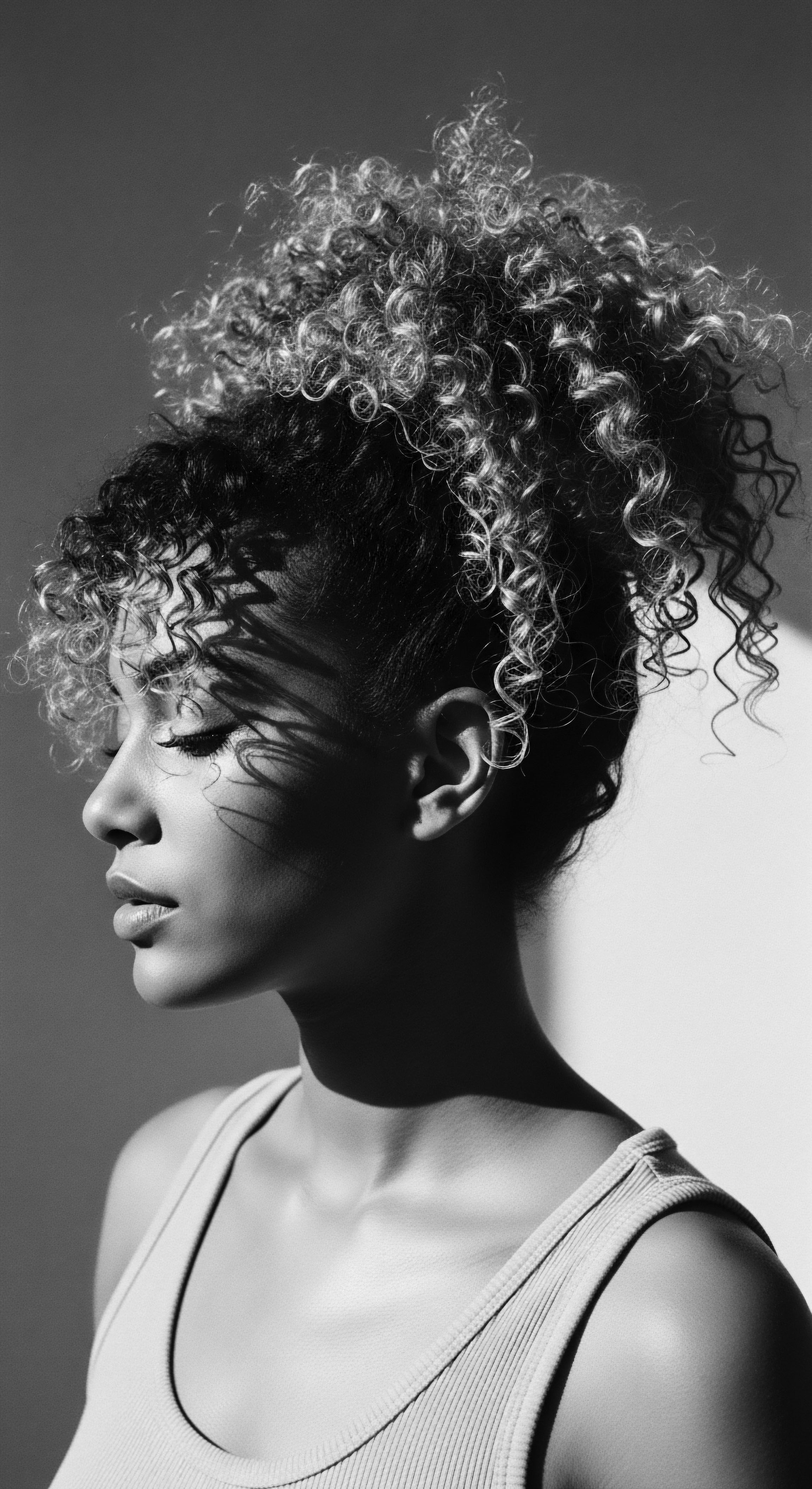
Intermediate
Expanding upon the fundamental biological tenets, an intermediate understanding of Hair Follicle Health delves into the delicate interplay between the follicle’s internal mechanisms and its external environment. This perspective recognizes that the follicle is not an isolated entity but rather a responsive organ, influenced by a symphony of factors that range from topical applications to systemic wellbeing. For individuals with textured hair, this responsiveness is particularly pronounced, as historical and contemporary practices, along with unique biological considerations, shape the follicle’s journey.
The vitality of the hair follicle extends beyond simple cleanliness; it encompasses the quality of circulation, the presence of inflammatory responses, and the integrity of the scalp’s protective barrier. A compromised scalp environment, whether due to excessive product accumulation, persistent tension from styling, or internal imbalances, can directly impede the follicle’s ability to perform its function, potentially leading to hair thinning, breakage, or even certain forms of alopecia. This level of comprehension invites a more discerning approach to hair care, moving beyond superficial remedies to address the root causes of follicle distress.
Hair Follicle Health involves a dynamic relationship between internal systemic factors and external environmental influences, particularly significant for the unique needs of textured hair.
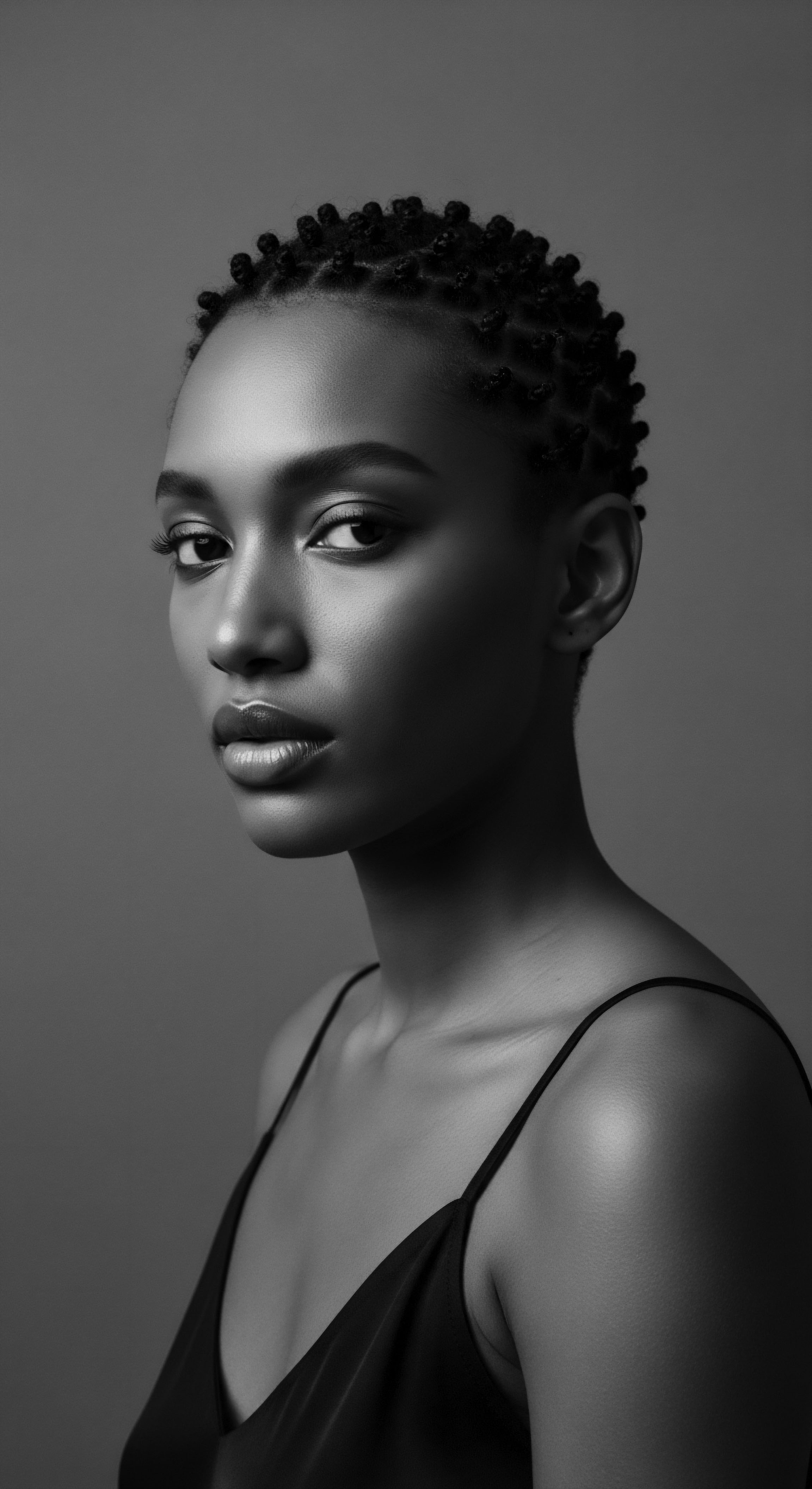
The Ancestral Dialogue of Care
Across generations and continents, communities with textured hair have cultivated profound systems of care, often intuitively addressing aspects of follicle health long before modern science articulated their mechanisms. These ancestral practices, passed down through oral tradition and lived experience, frequently centered on nourishing the scalp and protecting the hair’s fragile structure. From the use of indigenous botanicals to specific detangling rituals, these traditions represent a living testament to an enduring commitment to hair vitality.
For instance, the application of various natural oils and butters, such as Shea Butter from West Africa, has been a cornerstone of textured hair care for centuries. This practice, deeply rooted in heritage, serves not only to moisturize the hair shaft but also to condition the scalp, creating a more conducive environment for follicle function. Shea butter, with its vitamins A and E, along with essential fatty acids, supports scalp nourishment and helps soothe irritation, directly contributing to a healthier follicular bed. The wisdom embedded in these traditions speaks to a holistic approach, where hair care is intertwined with overall wellbeing and cultural identity.
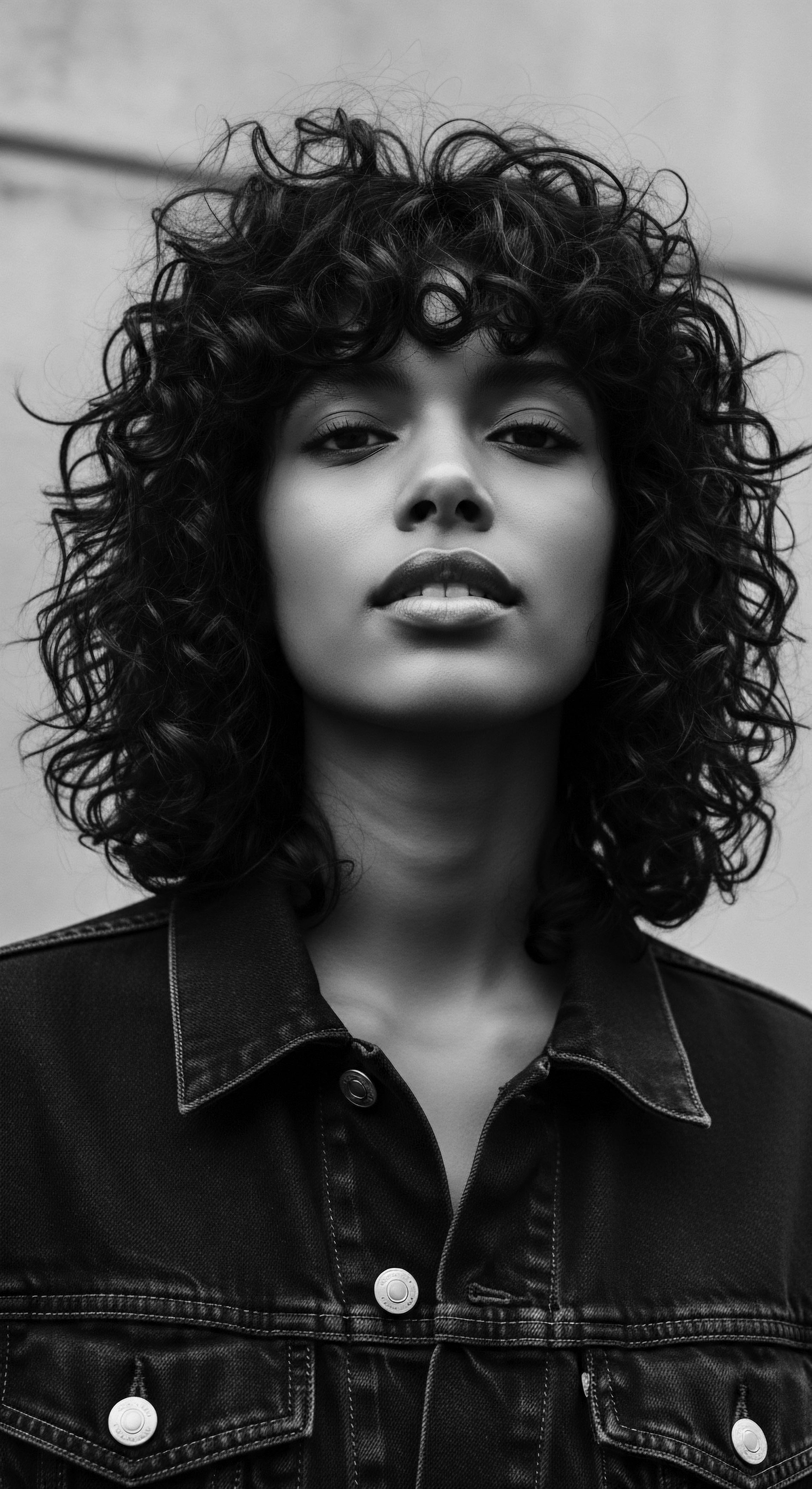
Common Challenges and Their Roots
Textured hair, with its unique helical structure, presents specific considerations for follicle health. The natural curl pattern can make it more prone to dryness, as sebum struggles to travel down the coiled shaft, leaving the ends vulnerable. This dryness can lead to breakage, which, when occurring close to the scalp, places stress upon the follicle itself. Furthermore, certain styling practices, while culturally significant and protective, can inadvertently strain the follicles.
Consider the impact of constant tension from tight braids, weaves, or extensions, which can lead to a condition known as Traction Alopecia. This physical pulling can inflame and damage the follicle over time, disrupting its ability to produce hair. Product buildup, too, can pose a challenge.
The dense curl patterns of textured hair can trap styling products and environmental debris against the scalp, potentially leading to blocked pores and irritation, which in turn compromises follicle health. Understanding these specific challenges within the context of textured hair care traditions is vital for fostering practices that truly honor and sustain the hair from its very source.
- Dryness and Breakage ❉ The coiled structure of textured hair can hinder natural oil distribution, leading to increased dryness and subsequent breakage that stresses follicles.
- Traction Alopecia ❉ Persistent tension from certain protective styles can physically damage hair follicles, leading to hair loss at the root.
- Product Accumulation ❉ The dense curl patterns can trap styling products and environmental particles, potentially suffocating follicles and causing irritation.
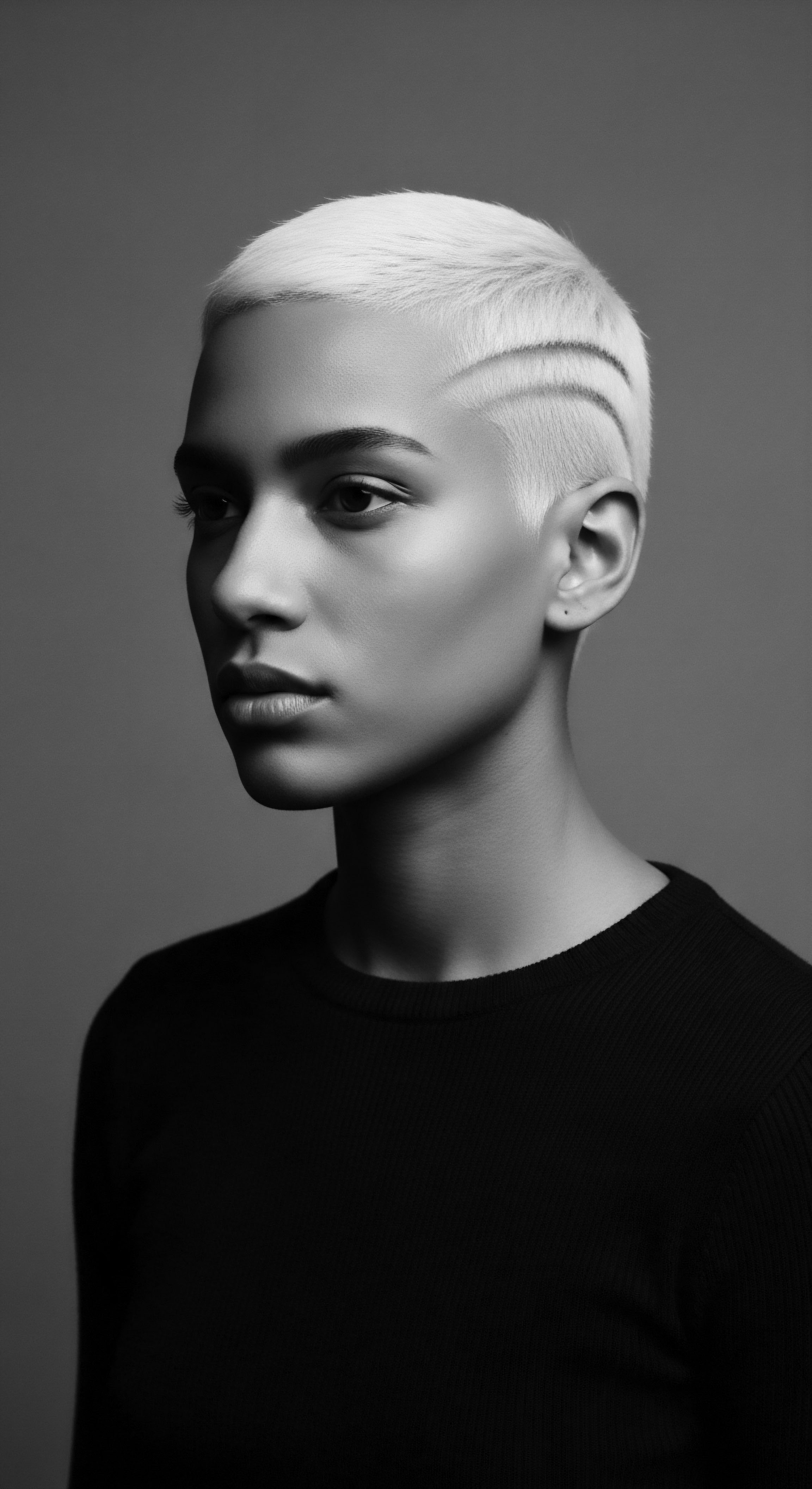
Academic
The academic elucidation of Hair Follicle Health transcends superficial observation, delving into the cellular and molecular mechanisms that govern this remarkable biological system, particularly as it pertains to the unique phenotypic expressions of textured hair. This interpretation recognizes the hair follicle not merely as a site of hair production but as a highly dynamic, self-renewing mini-organ, intricately regulated by genetic predispositions, hormonal fluctuations, immunological responses, and systemic metabolic states. Its optimal function is a complex orchestration, deeply sensitive to both internal physiological harmony and external environmental stressors. The meaning here extends to the profound implications of follicular wellbeing for dermatological science, ethnobotanical studies, and the broader understanding of human diversity.
The follicle’s lifecycle, characterized by anagen (growth), catagen (regression), and telogen (rest) phases, is a testament to its sophisticated regenerative capacity. Disturbances in this cyclical rhythm, often influenced by genetic inheritance or acquired conditions, directly impact hair density, caliber, and retention. For textured hair, the inherent elliptical shape of the follicle canal, which dictates the curvature of the hair shaft, also influences the distribution of keratinocytes and the mechanical properties of the growing hair. This anatomical distinction renders textured hair more susceptible to certain forms of breakage and inflammation at the follicular level, requiring a nuanced understanding that bridges biological specificity with historical care practices.
An academic lens on Hair Follicle Health reveals its intricate biological regulation, where genetic, hormonal, and environmental factors coalesce to shape hair vitality, especially within the unique context of textured hair phenotypes.
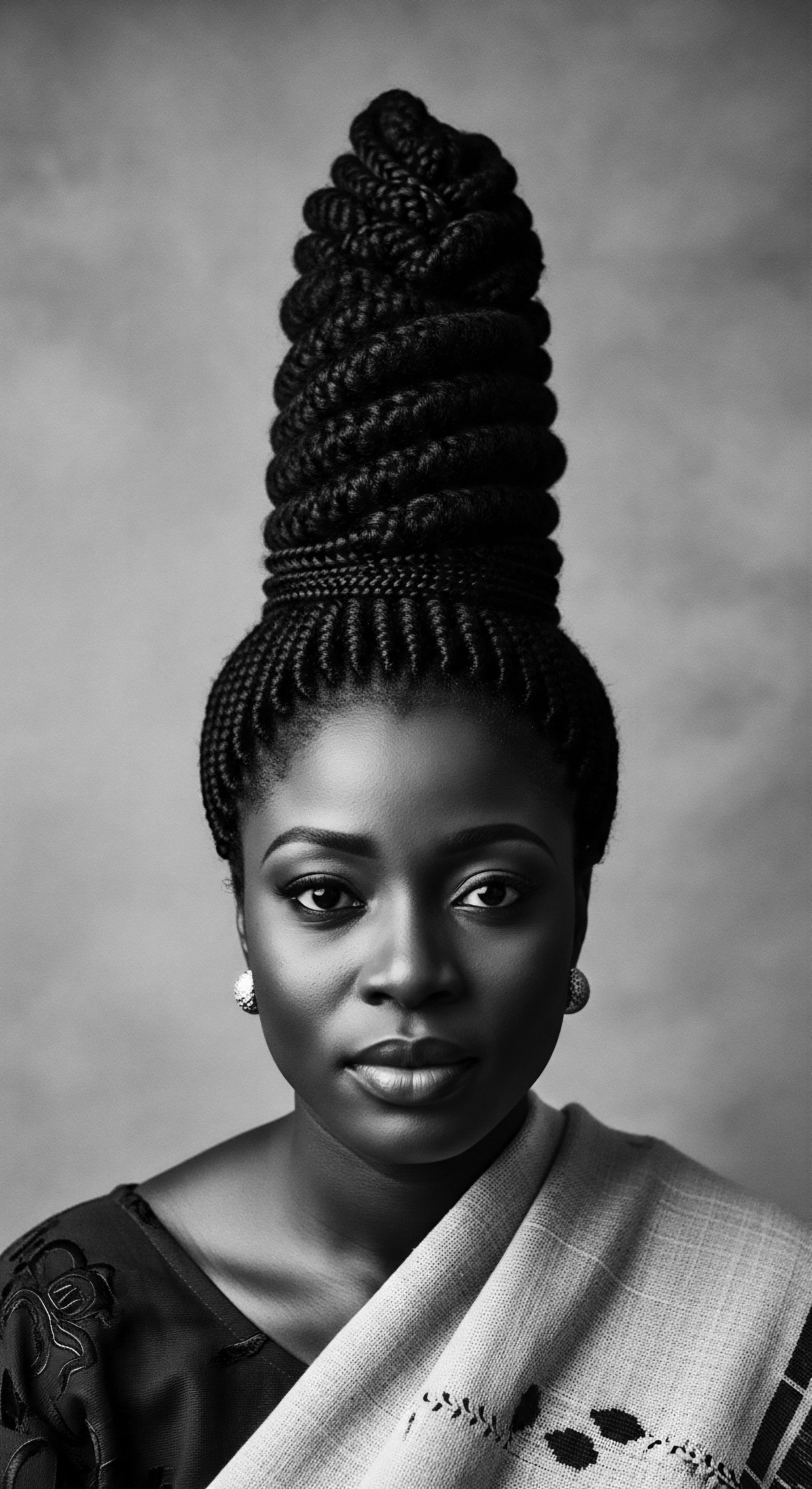
The Genetic Blueprint and Environmental Epigenetics
The fundamental shape of the hair follicle, which determines the curl pattern of the hair strand, is largely genetically predetermined. Afro-textured hair follicles are typically elliptical or ribbon-like in cross-section, causing the hair to grow in tight spirals or coils. This distinctive morphology influences how the hair exits the scalp, making it more prone to ingrown hairs (pseudofolliculitis barbae) when cut too short, a condition to which individuals of African descent are genetically predisposed due to the curvature of their hair follicles. Beyond structure, genetic factors also play a part in conditions such as Central Centrifugal Cicatricial Alopecia (CCCA), a progressive form of scarring hair loss observed predominantly in women of African descent, which can be linked to both genetic predisposition and certain hair styling practices.
However, genetic predispositions do not dictate an immutable destiny. Environmental epigenetics, the study of how external factors can alter gene expression without changing the underlying DNA sequence, offers a compelling perspective. The sustained application of traditional botanical compounds, specific dietary patterns, and protective styling methods, deeply ingrained within textured hair heritage, can influence the microenvironment of the follicle, potentially modulating inflammatory pathways or supporting cellular repair mechanisms. This highlights a dynamic interplay where ancestral wisdom, expressed through consistent care, may offer protective or supportive influences on the genetic blueprint of the hair follicle.
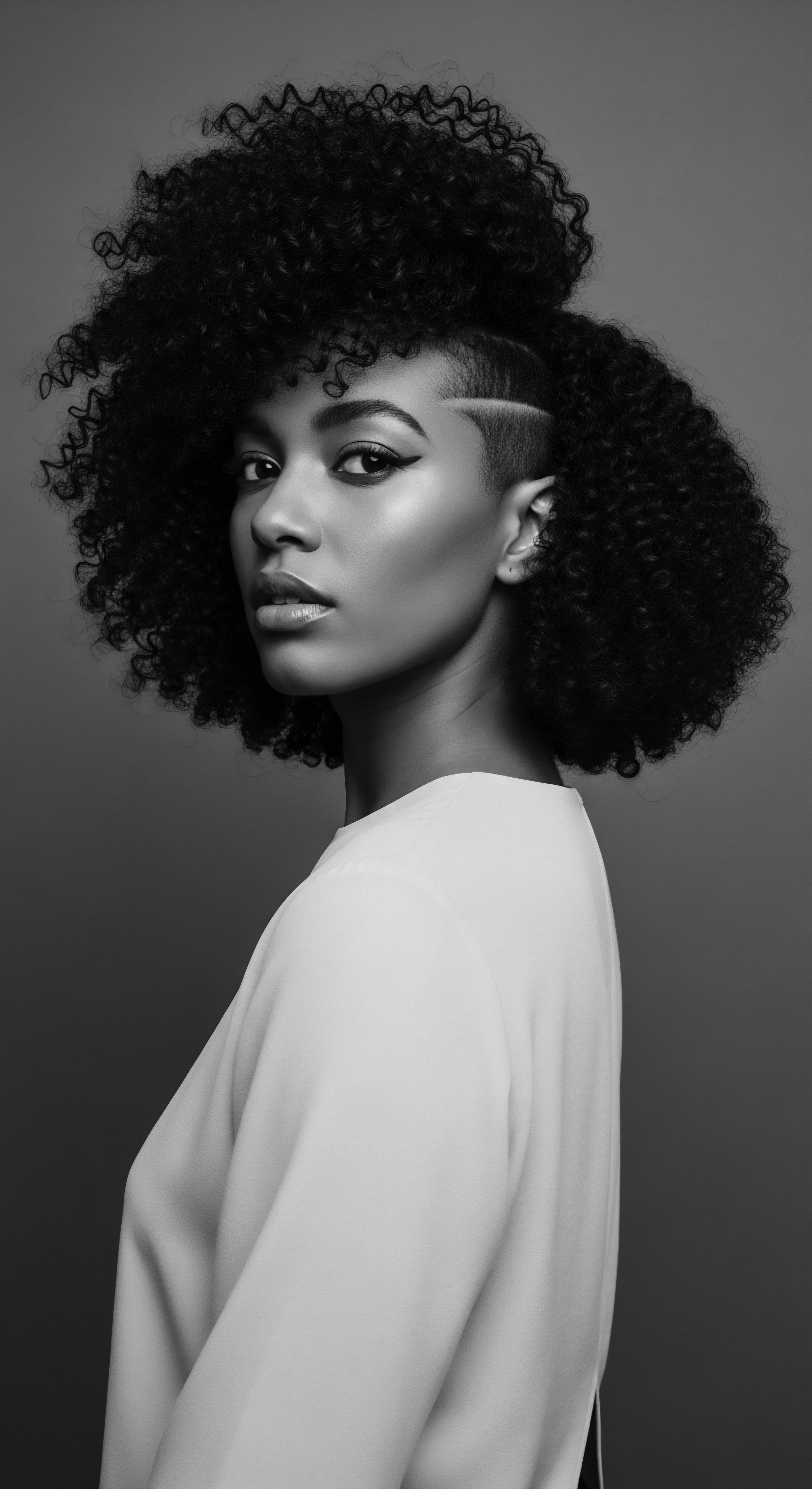
Ancestral Wisdom and Modern Validation ❉ A Case Study in African Botanicals
The profound knowledge of botanical remedies passed down through generations in African communities offers compelling evidence of ancestral understanding regarding hair follicle health. For centuries, women across various regions of Africa have utilized indigenous plants and natural compounds to maintain scalp vitality and promote robust hair growth. One striking instance involves the widespread application of African Black Soap, a traditional cleanser originating from West Africa, typically crafted from plantain peels, cocoa pods, shea tree bark, and palm kernel oil. This soap, celebrated for its gentle yet effective cleansing properties, has been historically employed not only for skin but also for scalp and hair care.
Scientific investigations have begun to unravel the biochemical underpinnings of these long-held practices, lending modern validation to ancestral wisdom. For example, African black soap is recognized for its significant content of vitamins A and E, alongside potent antioxidants. Vitamin E, specifically, plays a critical role in mitigating oxidative stress and neutralizing free radicals, cellular aggressors known to compromise the integrity of hair follicles. Furthermore, the natural ingredients in African black soap possess anti-inflammatory and antifungal properties, which are instrumental in addressing common scalp conditions such as dandruff and irritation.
A healthy, calm scalp environment is directly conducive to optimal hair follicle function, as inflammation can disrupt the hair growth cycle and lead to follicular damage. This scientific validation underscores how traditional cleansing rituals, seemingly simple, were in fact sophisticated methods of maintaining a supportive ecosystem for the hair follicle, preventing issues that modern dermatology now addresses with targeted compounds. The efficacy of these traditional formulations in maintaining scalp hygiene and mitigating inflammation, thereby preserving follicular vitality, speaks to a deep, experiential understanding of hair biology that predates contemporary scientific nomenclature.
| Ingredient (Origin) African Black Soap (West Africa) |
| Traditional Use Gentle cleansing of scalp and hair, treating dandruff and scalp irritation. |
| Contemporary Scientific Link to Follicle Health Rich in Vitamins A & E, antioxidants; anti-inflammatory and antifungal properties calm scalp, reduce oxidative stress, and support a healthy follicular environment. |
| Ingredient (Origin) Shea Butter (West Africa) |
| Traditional Use Moisturizing hair and scalp, soothing dryness and irritation. |
| Contemporary Scientific Link to Follicle Health Contains fatty acids, Vitamins A & E; reduces scalp inflammation, acts as an emollient, seals moisture into hair and scalp, supporting follicle hydration. |
| Ingredient (Origin) Chebe Powder (Chad) |
| Traditional Use Coating hair to reduce breakage and retain length. |
| Contemporary Scientific Link to Follicle Health While not directly stimulating follicle growth, its use reduces hair breakage, which lessens stress on follicles by maintaining hair length and density. |
| Ingredient (Origin) Rooibos Tea (South Africa) |
| Traditional Use Hair rinses for overall hair health. |
| Contemporary Scientific Link to Follicle Health Possesses antimicrobial and antioxidant properties, potentially aiding in maintaining a healthy scalp environment conducive to follicle function. |
| Ingredient (Origin) These ancestral compounds exemplify a holistic approach to hair care, where practices aimed at hair strength and appearance also inherently support the underlying follicular health. |
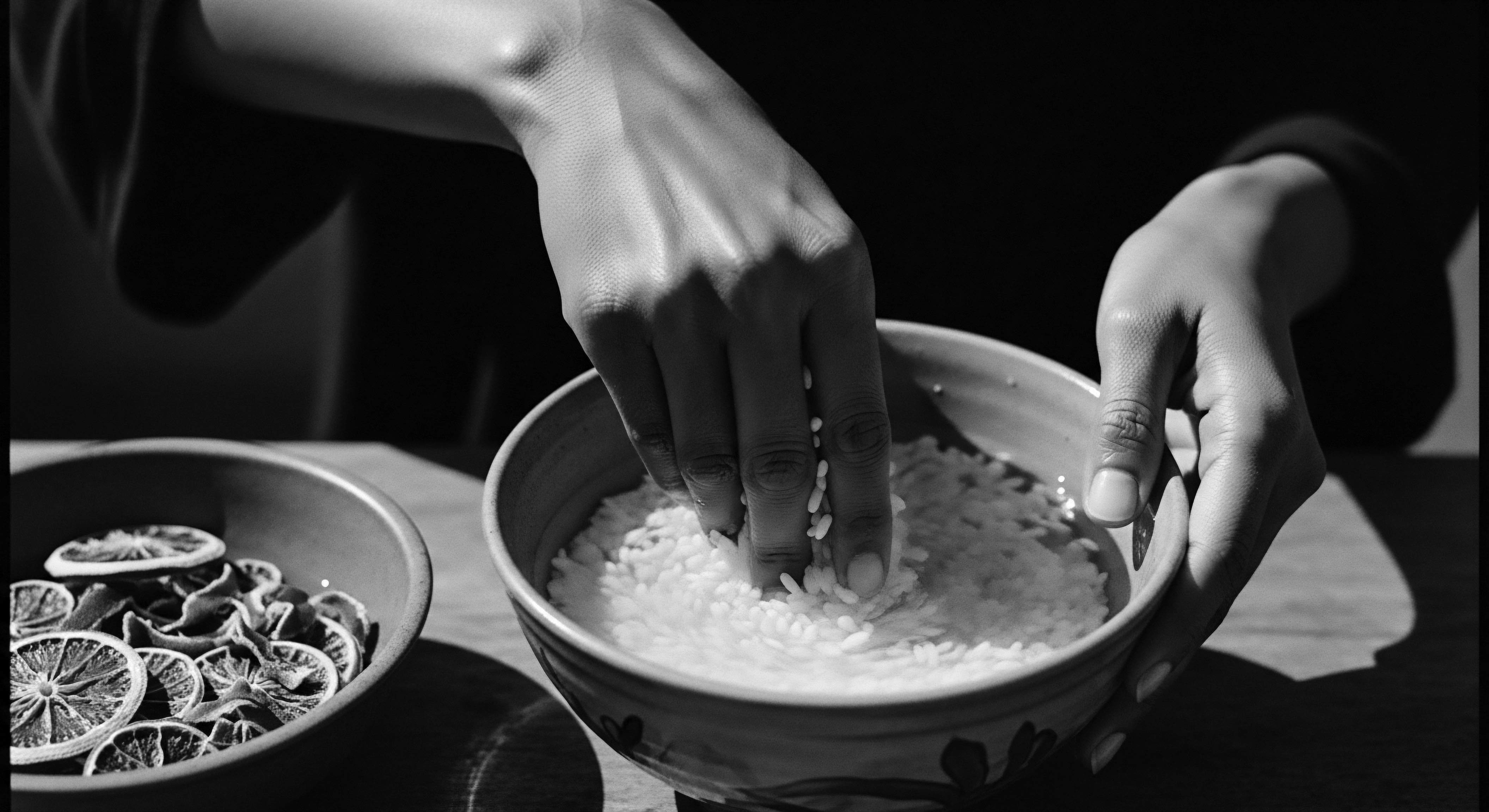
Interconnected Systems ❉ Beyond the Scalp
The health of hair follicles is inextricably linked to broader systemic health. Nutritional deficiencies, chronic stress, hormonal imbalances, and certain autoimmune conditions can all manifest as changes in hair quality or quantity. For example, deficiencies in iron, zinc, or certain B vitamins can disrupt the rapid cellular division occurring within the hair matrix, compromising hair growth. Similarly, prolonged periods of elevated stress can prematurely shift follicles into the resting phase, leading to increased shedding.
The dialogue between the hair follicle and the body’s internal systems is a testament to its biological complexity. The follicular unit is a highly metabolically active site, requiring a steady supply of energy and building blocks. Disruptions to this supply, whether from dietary shortcomings or systemic disease, can directly impede its function. A comprehensive understanding of Hair Follicle Health, therefore, necessitates a holistic perspective, acknowledging the deep connections between external hair presentation and the intricate workings of the human organism, a perspective often echoed in ancestral wellness traditions that viewed the body as an interconnected whole.

Reflection on the Heritage of Hair Follicle Health
The journey through the nuanced interpretations of Hair Follicle Health reveals a profound truth ❉ the wellbeing of our hair’s very source is a story woven through generations, echoing the resilience and ingenuity of those who came before us. It is a narrative that speaks not only of biological function but of cultural continuity, identity, and the enduring spirit of textured hair. From the elemental pulse of a healthy follicle, through the tender traditions of care, to the boundless expressions of identity, the hair follicle stands as a testament to life’s persistent unfolding.
Roothea’s living library honors this legacy, recognizing that the care we bestow upon our hair follicles today is a continuation of ancient dialogues. It is a dialogue between human hands and the earth’s bounty, between inherited wisdom and contemporary discovery. The understanding of Hair Follicle Health, particularly within the context of textured hair heritage, is not a static concept but a vibrant, evolving understanding, continuously enriched by the experiences and knowledge passed down through time. Each coil, each strand, carries within it the echoes of ancestral practices, the whispers of traditional remedies, and the strength forged through centuries of care and cultural expression.
To tend to the hair follicle is, in essence, to honor this deep, abiding connection to our past, allowing the vibrant legacy of textured hair to flourish in the present and shape the pathways of future generations. It is a sacred act of preservation, a celebration of inherited beauty, and a quiet declaration of self-worth.
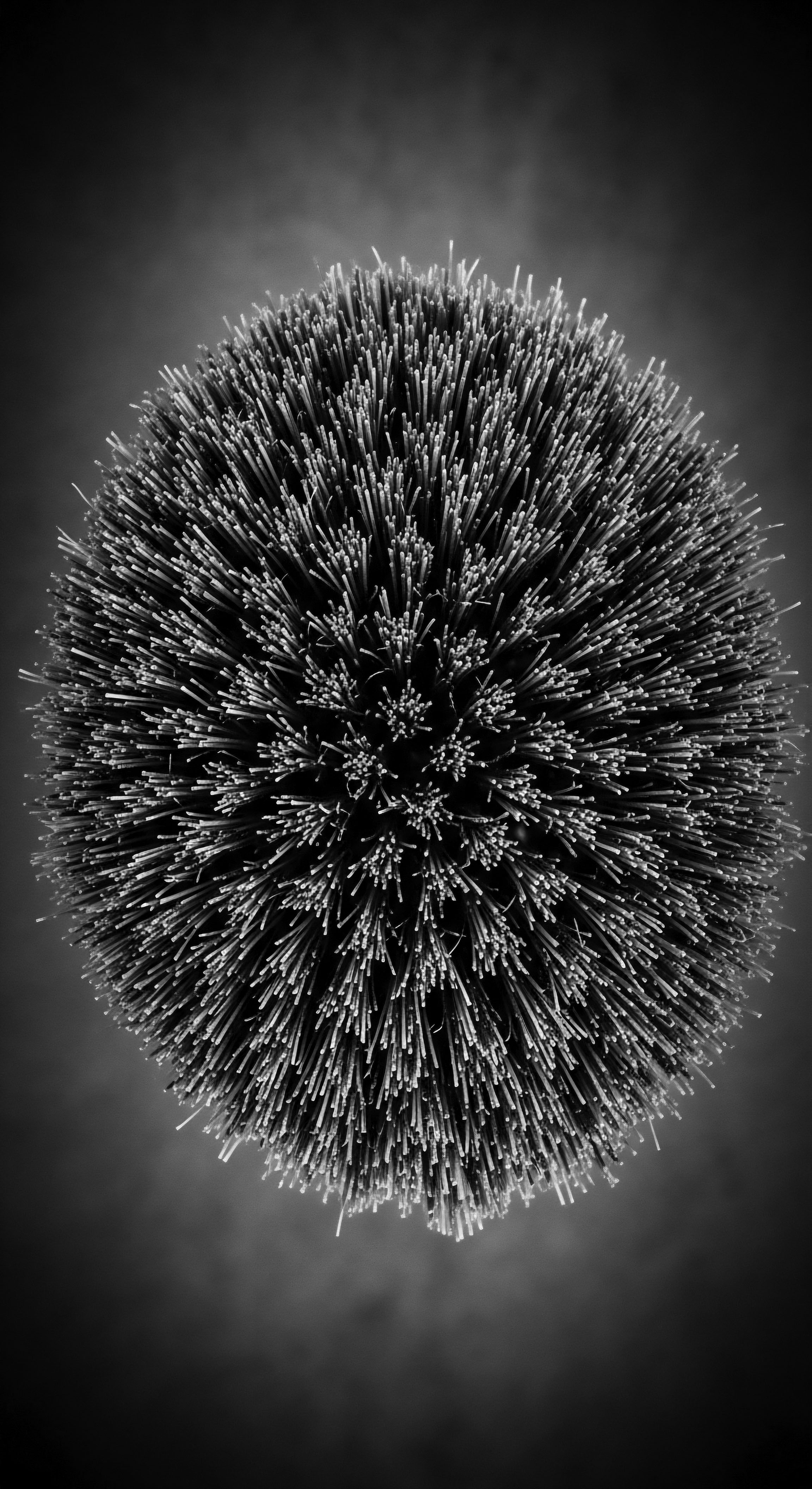
References
- 1. Abena, O. A. & Agrawal, A. (2022). Afro-Ethnic Hairstyling Trends, Risks, and Recommendations. Cosmetics, 9 (1), 22.
- 2. Akinkuotu, O. A. (2021). Ancient African Hair Growth Secrets For Healthy Hair. Sellox Blog .
- 3. Byrd, A. D. & Tharps, L. D. (2001). Hair Story ❉ Untangling the Roots of Black Hair in America. St. Martin’s Press.
- 4. EcoFreax. (2023). African Black Soap ❉ The Natural Wonder for Skin and Hair. EcoFreax Blog .
- 5. EdwardAsare. (2021). The Role of Hair in Ancient African Cultures. EdwardAsare Digital Marketer .
- 6. Kodd Magazine. (n.d.). African Hair Tells a Story and Inspires the Future. Kodd Magazine .
- 7. The Love of People. (2023). 9 Benefits Of African Black Soap For Hair. The Love of People Blog .
- 8. Nchinech, N. Bouksaim, M. & El Hajjaji, A. (2023). Plants Use in the Care and Management of Afro-Textured Hair ❉ A Survey of 100 Participants. Scholars Journal of Applied Medical Sciences, 11 (11), 1984-1988.
- 9. Nigeria News, T. G. (2019). Scientists validate more herbs for hair growth. The Guardian Nigeria News .
- 10. Olusanya, R. & Ajiboye, M. (2024). Cosmetic Ethnobotany Used by Tribal Women in Epe Communities of Lagos State, Nigeria. Juniper Publishers .
- 11. Patel, D. & Sharma, V. (2021). Development and Evaluation of Herbal Hair Serum ❉ A Traditional Way to Improve Hair Quality. International Journal of Pharmaceutical Sciences and Research, 12 (8), 4441-4447.
- 12. St.Botanica. (2024). Shea Butter for Hair ❉ Top 10 Benefits, Uses. St.Botanica Blog .
- 13. Termix. (2022). Shea butter benefits for hair. Termix Blog .
- 14. Ugboko, H. U. & Eze, E. E. (2024). Cosmetopoeia of African Plants in Hair Treatment and Care ❉ Topical Nutrition and the Antidiabetic Connection? Diversity, 16 (2), 96.
- 15. VisualDx. (2024). Enhancing Dermatological Care ❉ Understanding the Science and Significance of Afro-Textured Hair. VisualDx .
